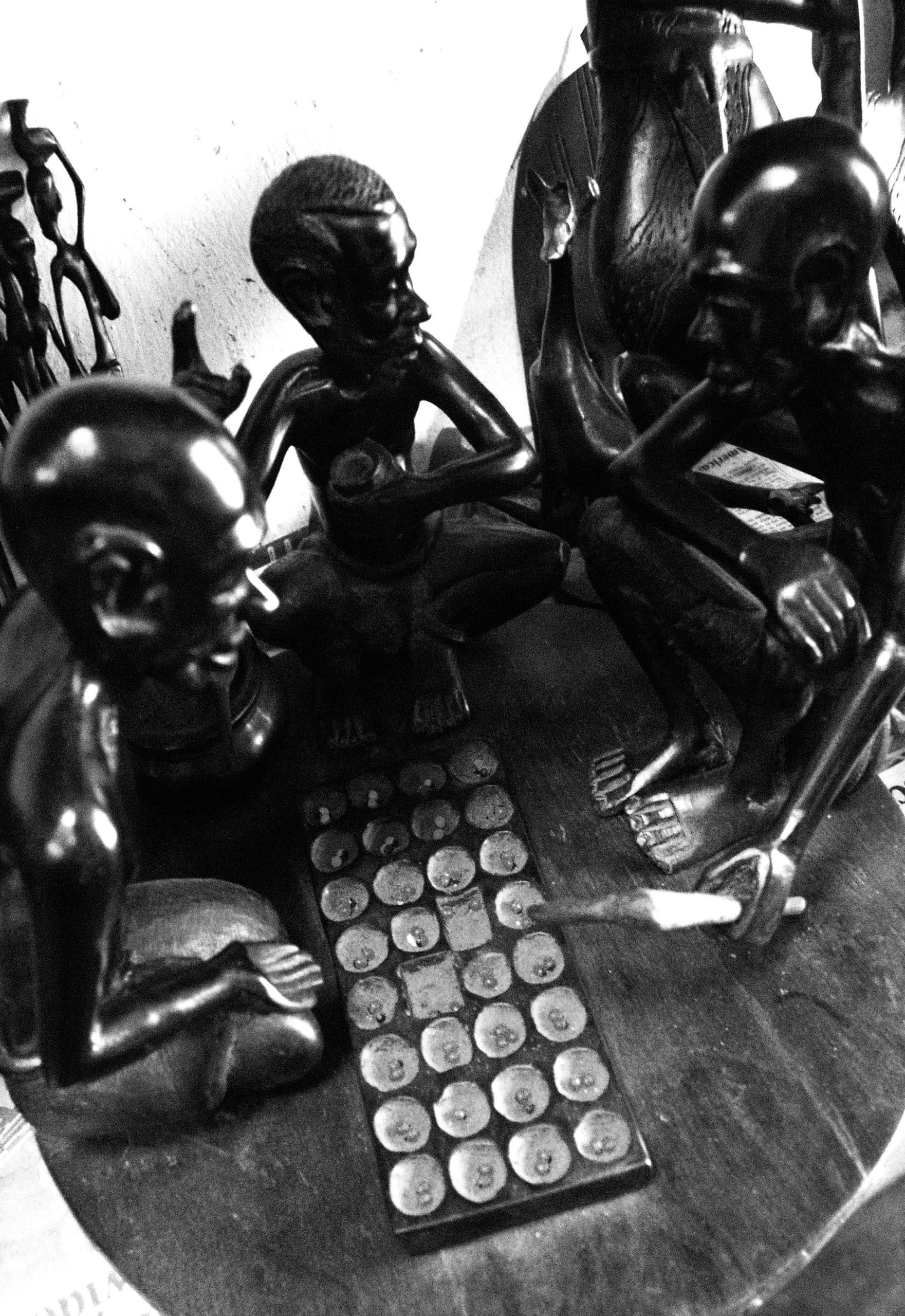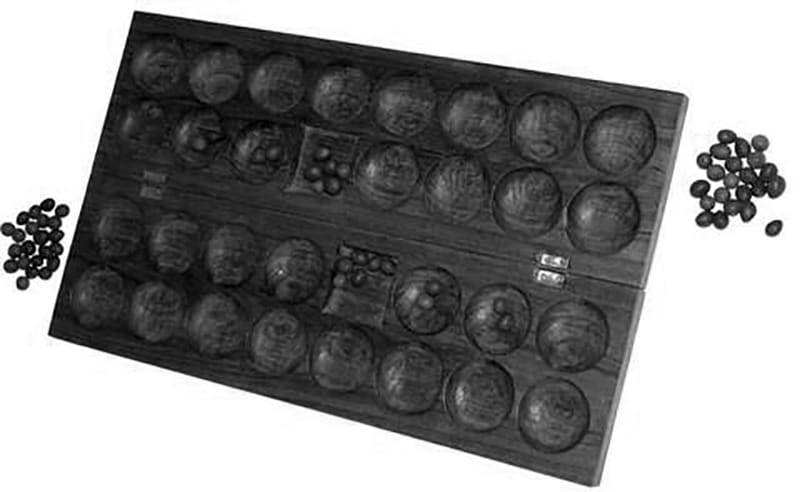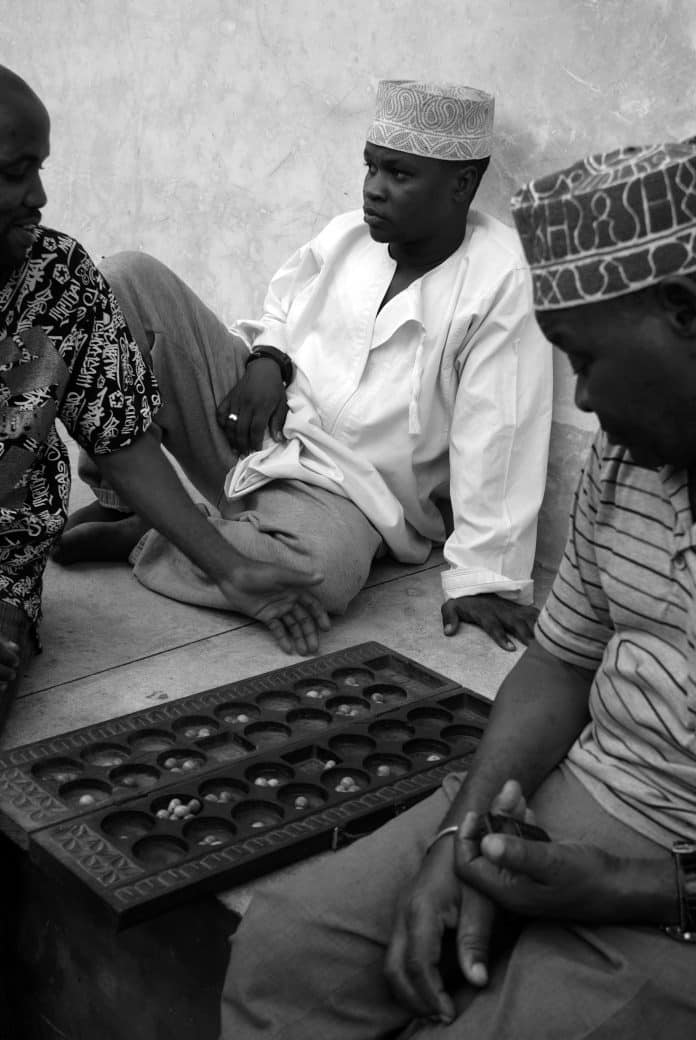Bao Game – History, Rules, Terminology and More
Bao is an ancient mancala board game popular in most parts of East Africa such as Kenya, Comoros, Tanzania, Malawi, and Burundi as well as parts of Burundi and the Democratic Republic of the Congo. It is common among the Swahili people from Kenya and Tanzania; the term “Bao” means “board game” or “board” in Swahili. A “bao master” (known as “bingwa,” meaning “master,” but sometimes called “fundi,” which means “artist”) is revered in Tanzania, particularly in Zanzibar. Bawo, the Yao counterpart of the Swahili term, is the name of a close form of the game played in Malawi.
Bao is a renowned mancala in terms of strategical depth and complexity, and it has piqued the curiosity of researchers from a variety of fields, including complexity theory, psychology and game theory. Tanzania, Malawi, Zanzibar, and Lamu (Kenya) hold official tournaments, while both Zanzibar and mainland Tanzania have Bao societies, like the Chama cha Bao, which was created in 1966.
There are two types of Bao in Tanzania and Zanzibar. Bao la Kiswahili is the major variant and is also the most sophisticated and most popular (“Bao of the Swahili people“). Bao la kujifunza is the simpler form (“Bao for beginners”). Bao is linked to a number of other mancalas found in East Africa (and parts of the Middle East). Oman’s Hawalis game is one of them; it is also called “Bao la kiarabu” in Zanzibar (“Bao of the Arabs”). Omweso (a Ugandan game) is a close relative to Bao, as it uses comparable equipment and follows some of the same rules.
History of Bao African Game
Bao, like most traditional mancalas, lacks exact historical information regarding its beginnings and spread. Early descriptions and archaeological evidence are debatable because there are numerous games that include equipment and rules that are comparable to Bao. For instance, a 1658 report by Étienne de Flacourt, a French governor, describing a game performed by the Sakalava in northeastern Madagascar is commonly cited as the oldest reference to the Bao game Tanzania, however, experts are split on whether Flacourt’s game is the same as Bao proper. Most archaeological board finds are based on the concept that boards with a square hole in a certain location (such as the nyumba, see below) are related to Bao. It is the only mancala known to have such a characteristic. However, because traditional Bao boards are constructed using wood, historic proof of the game is unlikely to be discovered. The oldest known Bao board is said to be from Malawi, which is on display in the British Museum and dates from no earlier than 1896. Thomas Hyde, a British Orientalist, observed Bao played in Anjouan (Comoros) in 1658 and wrote one of the first recorded accounts of the game in the Swahili community.

Despite the paucity of historical proof, it is logical to conclude that Bao originated from the Swahili coast due to its close ties to the Swahili culture (i.e., the coast of Kenya and Tanzania and their islands). It’s also worth noting that “Bao la Kiswahili” implies “Swahili board game,” as opposed to “Bao la kiarabu,” for example (which is the related “Arab board game”, also called Hawalis). Muyaka bin Haji, a Swahili poet from Mombasa, wrote the poem Bao Naligwa in the 1820s to commemorate the game.
Bao Game How to Play
Bao Game Rules Simple
Bao game rules, like those of other traditional games, have only been passed down by oral tradition, and as a result, they are prone to regional variances. Alex de Voogt, a board game expert, authored the most important transcription of the rules between 1991 to 1995, based on the teachings of Bao masters from Zanzibar.
African Board Game Bao Equipment
Bao is made up of 4 rows of 8 pits each; pits are called mashimo (singular: shimo) in Swahili, which means “holes.” Each player is in charge of half of the board, which consists of two neighboring rows.
Some pits have distinct names because they serve a specific function in the game. The kuu (“main”) or nyumba (“house”) is the 4th rightmost pit in the “inner” row of each side of the board.; it is visually recognized by a square form on most traditional boards. The first pit and the last pit in the inner row are known as kichwa (“head”), whereas the kichwa and pits close to them are known as kimbi (i.e., the 2nd and next to the last pit in the row).
Each Bao player has 32 kete, which are undifferentiated counters (or “seeds” in traditional mancala nomenclature) (“shells”). A number of other African mancalas, notably Isolo (South Africa) and Omweso (Uganda), use similar equipment (64 seeds and a 4×8 board).
One of the features that distinguish various versions of the game is the initial seed arrangement.
Bao Board Game Setup
In Bao la Kiswahili, every player starts by placing six seeds in the nyumba and 2 additional seeds in the 2 pits to its right. The rest of the seeds are kept “in hand.” Eight seeds are put in the nyumba in Malawi. As a result, at the start of the game, every player has 20 or 22 seeds in their hands. These seeds are put into the game during the namua phase, which is the initial phase of play.
All seeds are planted at the start of Bao la kujifunza, two in each pit. As a result, the namua phase does not exist because the players do not have any seeds in their hands.

Bao Game Instructions
Here are the basic instructions for playing the Bao game Zanzibar:
- The game begins with four seeds placed in each of the 16 small pits.
- The player who starts first is determined by a toss of a coin or some other random method.
- The player takes all the seeds from one of their pits and distributes them in an anti-clockwise direction, placing one seed in each of the pits, including their own larger pit or store. If the last seed lands in their own larger pit or store, they get another turn.
- If the last seed lands in an empty pit on their own side of the board, and the opposite pit on their opponent’s side has seeds in it, they capture those seeds and place them in their larger pit or store. The captured seeds do not include the last seed they placed.
- If the last seed lands in an empty pit on their own side of the board, and the opposite pit on their opponent’s side is also empty, then their turn ends, and their opponent takes their turn.
- The game continues with players taking turns until one of the players has no more seeds in their pits on their side of the board. The other player then takes all the remaining seeds from their side of the board and places them in their larger pit or store.
- The player with the most seeds in their larger pit or store at the end of the game is declared the winner.
Namua
During the namua phase, every Bao game player begins by introducing one seed into the board. The seed must be planted in a non-empty hole in the inner row of the player.
A “marker” pit is found on the inner row facing an opponent’s pit that is not empty. Capture happens when the first seed is deposited in a marker pit, and the turn of the player is referred to as mtaji turn. Otherwise, it will be referred to as a takata turn. If a player is in a position to, she or he must capture. Other captures in a mtaji turn can occur as a result of sowing; in a takata round, however, captures are not possible.
Sowing and Capture
In the event of a capture, the Bao game player acquires all of the opponent’s seed from their captured pit and then relay sows the seeds in her or his own rows. The initial seed must be put in a kichwa; if placed in the right kichwa, sowing will go anticlockwise, but if placed in the left one, sowing will proceed clockwise. As a result, the right kichwa is also known as “counterclockwise kichwa,” whereas the left kichwa is known as “clockwise kichwa.”
With some exceptions, the Bao player sows from the kichwa of his or her choice at first. If any capture occurs in any of the kimbi, sowing must begin with the kichwa nearest to it.
During relay-sowing, if the final seed of any individual sowing is placed in a marker, a fresh capture is occurs. The captured seeds are sown starting from the kichwa. In this instance, the player could not choose the kichwa to sow from. If the capture happened in a kimbi, sowing had to begin from the nearest kichwa, as described above; otherwise, the Bao game player has to maintain the existing counterclockwise or clockwise sowing direction. If a capture happens at the conclusion of clockwise sowing, the freshly captured seeds must be seeded from the clockwise kichwa onwards, and vice versa.
Unless it is a mtaji turn, relay sowing will take place, but no captures will occur: marker pits are considered the same as any other pits.
In any event, the round comes to a close when the last seed in a sowing is dropped into an empty hole.
Mtaji Phase
The namua phase of the game ends when players do not have any more seeds left, and the “mtaji” part of the game starts. It’s important to remember that the term “mtaji” can refer to both a turn and a game phase; the two are not interchangeable. Also, because there are no seeds in hand, the game in Bao la kujifunza starts with the mtaji phase.
The player begins the mtaji phase by taking all seeds from any pit with at least two seeds (either anticlockwise or clockwise). A mtaji turn starts when the last seed from the initial sowing is placed in a marker, following the same rules as before. In the event that the marker is a kimbi, the nearest kichwa will be used to sow; otherwise, the player has to maintain the counterclockwise or clockwise direction of the sowing that produced the capture.
The player must capture in the namua phase if she or he is capable of doing so.
The entire turn is a “takata turn,” much like the namua phase if the initial sowing does not result in a capture. If feasible, the player should begin seeding from a pit on the inner row in this instance.
If the initial sowing comes from a pit with over 15 seeds, regardless of whether or not the last seed falls in a marker, the turn will be “takata.”
The Nyumba
There are certain additional regulations linked to the nyumba in Bao la kiswahili that are not contained in Bao la kujifunza. First, the turn is over if sowing in a takata turn finishes up in the nyumba (the seeds are not “relay-sowed” in the nyumba). Second, if sowing during the mtaji turn ends in the nyumba in a case where the nyumba is not a marker, the player has the option of relay-sowing the contents of the nyumba or ending the round. Third, if the player begins his turn by sowing seeds from the nyumba in the namua phase, he will sow only 2 seeds from the nyumba instead of the entire contents. The nyumba is “taxed” in this way.
The nyumba’s unique properties are lost when the seeds it contains are sown for the first time (taxation excluded), i.e., when the player decides to relay-sow from it during a mtaji turn, or if taken by the opponent.
These regulations are subject to several exceptions. Taxing the nyumba, for example, is occasionally permitted only when there are no other legal means to begin a player’s turn. In certain Bao variants, relay-sowing the nyumba during the mtaji turn is a requirement rather than an option.
Ending the Game
When a player runs out of seeds in her or his inner row, or if she or he can no longer move, the game is over. This player loses the game in both scenarios.
Check out this videos on how to play bao game!
Game Bao Terminology
The following words are frequently used in Swahili literature in reference to Bao:
- kete-“seeds.”
- Kichwa – The last and first pits in the inner row of a player
- Kimbi – The last 2 and the first 2 pits in the inner row of the player,i.e., the kichwa and the pits next to them. In other cases, ‘kimbi’ is used to only refer to the 2nd as well as next to last pits found on the inner row, meaning the kichwa pits are not part of the kimbi pits.
- Mtaji – In reference to a turn, the turn starts with a capture, which may include more captures. In reference to a game phase, mtaji is the phase in which no seeds remain in hand. A few sources use the term to refer to a bunch of seeds that can cause a capture when sown.
- Namua – Bao la Kiswahilli’s first phase, during which seeds that are in hand are introduced.
- Nemo – Seeds that are “in hand”.
- Nyumba – The 4th pit to the right of the inner row of a player; normally characterized by a square pit.
- Shimo(plural:mashimo) – pits
- Takata – a turn that does not start with a capture, and may therefore not have any captures.
Bao Game Strategy
There are various strategies that players can use to improve their chances of winning the Bao game. Here are a few general strategies:
- Open with a strong move: The opening move in the Bao game can have a significant impact on the outcome of the game. One popular opening move is to start by sowing seeds from the third or fourth pit from the left, as this can set up a strong defensive position.
- Focus on capturing seeds: Capturing seeds from your opponent’s pits is a key strategy in the Bao game. Try to set up moves that will allow you to capture your opponent’s seeds while protecting your own.
- Keep seeds in the front pits: Seeds in the front pits are more vulnerable to capture, so it’s important to move them to the back pits as quickly as possible. This can help you protect your seeds while giving you opportunities to capture your opponent’s seeds.
- Use the larger pit to your advantage: The larger pit at the end of the board can be a powerful tool in the Bao game. Try to position your seeds so that you can move them into the larger pit and gain extra turns, or use the larger pit to capture your opponent’s seeds.
- Stay flexible: The Bao game is a dynamic game that requires players to constantly adapt to changing situations. Try to stay flexible and be prepared to adjust your strategy as the game progresses.
Bao Game in English
In English, the game is commonly referred to as Mancala, which is a generic name that encompasses a family of similar games played around the world, with variations in rules and board design.
The bao mancala game is a traditional two-player strategy board game that originated in East Africa. The game is played with a board consisting of two rows of pits, and is often used as a tool for teaching mathematical concepts and problem-solving skills.
You might also be looking for bao bun game.
Where Can I Play Bao Game?
You can play the game here:
For more articles related to Tanzania Sports, click here!

































